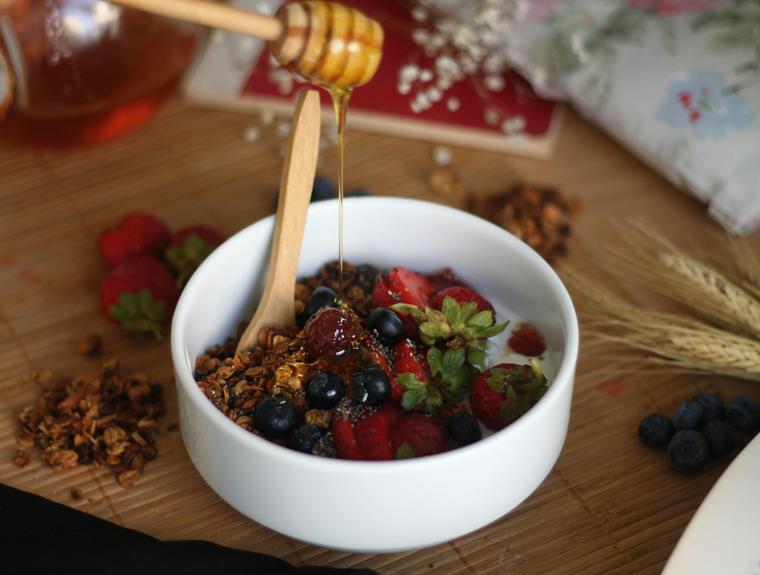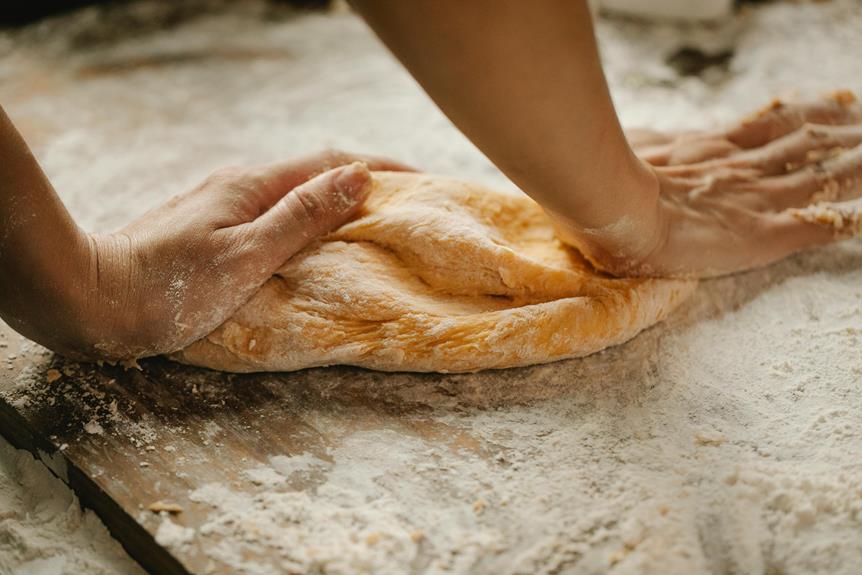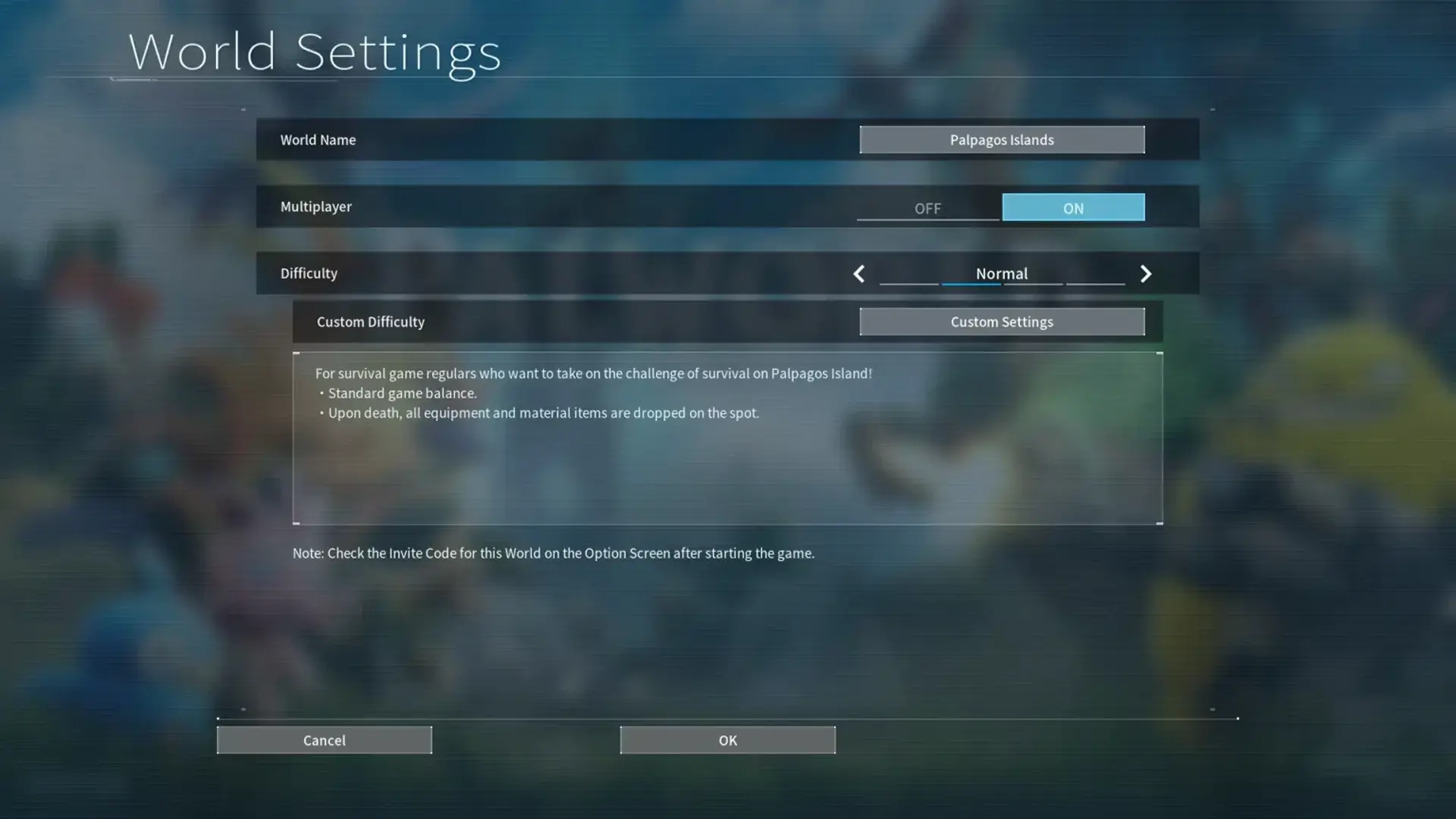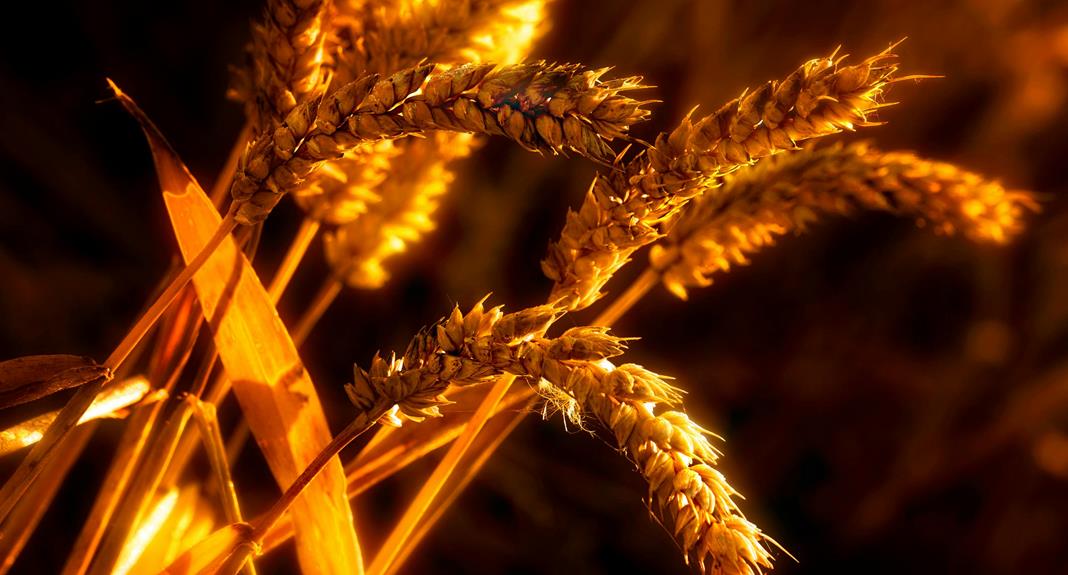In 7 Days to Die, kickstart your farming journey by initiating, guaranteeing, and maximizing crops. Secure seeds from looting or traders to begin. Set up farm plots (except for mushrooms) for planting and watch your crops progress. Use melee attacks to gather mature plants. Make sure to prep with the right soil and seeds, essential for thriving crops. Guarantee proper lighting for peak growth. Master the growth cycle for healthy plants. Harvest wisely, replant for sustainability, and rotate crops for soil fertility. Discover water conservation methods for excellent crop health. Ready to access more farming secrets in the game?
Key Takeaways
- Essential tools like hoe and shovel for farm preparation.
- Optimize natural light exposure for healthy plant growth.
- Understand plant growth stages and indicators.
- Harvest mature plants with melee attacks.
- Implement crop rotation for soil fertility and yield improvement.
Farming Basics
To successfully engage in farming in 7 Days to Die, you must understand the basics of planting, growing, and harvesting crops. When you start your farm, obtaining seeds is important. You can find them while looting, buy them from traders, or craft them using your crafting skills. Once you have your seeds, you will need a farm plot to plant them, except for mushrooms which can grow without one.
Understanding the growth requirements of crops is essential. Each crop has specific sunlight needs for best growth. Placing your farm plot in a location that meets these requirements will guarantee your crops flourish. As you plant your seeds, they will progress through different growth stages, from seedling to a mature plant ready for harvest.
When it comes time to harvest your crops, you will need to use melee attacks on the mature plants. This will yield the resources you have been patiently waiting for. By mastering these farming basics, you will be on your way to creating a successful farm in 7 Days to Die. Remember, proper care and attention to your crops will result in a bountiful harvest.
Preparation

Before you start farming in 7 Days to Die, it's important to have the right supplies and resources. Soil and seeds are essential for your crops to grow successfully. Additionally, tools and access to water will play a significant role in maintaining your farm.
Soil and Seeds
Your farming success hinges on the quality of your soil and the selection of appropriate seeds. Clay soil, known for its richness in nutrients, is crucial for cultivating crops effectively. When choosing seeds, consider the specific requirements of each plant type for best growth. Seeds can be found in various locations or crafted if you have the Living Off the Land perk. Understanding the relationship between soil quality and seed selection is key to a thriving farm. Make sure you have suitable farm plots to plant your seeds, providing a controlled environment for cultivation. By paying attention to the soil composition and choosing the right seeds, you set the foundation for a successful farming venture.
Tools and Water
For effective farming in 7 Days to Die, ensuring you have the necessary tools such as a hoe or shovel and access to water sources is essential. Tools like a hoe or shovel are important for preparing farm plots, while water sources are fundamental for irrigating crops and ensuring their growth in the game. Proper tools and water management play a significant role in preparing for successful farming in 7 Days to Die. Farming efficiency is greatly enhanced when players have the required tools and access to water resources. Prioritize acquiring tools and securing water sources to kickstart your farming endeavors in 7 Days to Die.
| Tools | Water Sources | Importance | Preparation |
|---|---|---|---|
| Hoe | River | High | Essential |
| Shovel | Well | High | Critical |
| Axe | Rain Barrels | Medium | Important |
Lighting

To optimize plant growth in 7 Days to Die, ensuring sufficient natural light reaches your crops is essential. When setting up your farming operation, whether indoors or underground, it's important to take into account the following points about lighting:
- Natural light to grow: Plants in 7 Days to Die rely on natural sunlight for photosynthesis, which is important for their growth and development. Ensuring they receive adequate sunlight will help them thrive and produce a bountiful harvest.
- Light Opacity: The opacity of blocks in indoor or underground farming areas can impact the amount of natural light that reaches your crops. Using materials like bulletproof glass, which has high transparency, can help maximize the light exposure for your plants.
- Proper lighting conditions: Creating the right lighting conditions is key to successful farming in 7 Days to Die. By optimizing the amount of natural light your crops receive, you can promote healthy plant growth and increase your overall crop yield.
Growth Cycle

When discussing the growth cycle in 7 Days to Die farming, understanding the progression of plants through seeding, growing, and full development is vital. Plants in this game go through a three-stage growth cycle, starting from the seeding stage where you plant the seeds in the ground. As time passes and conditions are met, the plants move into the growing stage, where you will notice visible changes in plant height and leaf growth. These serve as indicators of the plant's progress towards becoming fully developed.
Transplanting is a key step that occurs after germination to facilitate the continued growth of the plant. This process helps optimize the plant's environment and nutrient intake for better development. It is important to be patient and attentive during this growth cycle, as proper care will lead to healthy and fully-grown plants.
In 7 Days to Die, having a good understanding of the growth cycle is essential for successful farming. Knowing when the plants are fully matured is critical for harvesting at the right time to ensure maximum yield. Additionally, utilizing the Land perk can enhance your farming capabilities by improving the growth rate and yield of your crops. Mastering the growth cycle will lead to bountiful harvests and sustainable farming in the game.
Harvesting

Melee attacking mature plants is the primary method for collecting yields in 7 Days to Die. When you harvest crops, there is a 50% chance of obtaining seeds for future planting. Trees can be harvested using your hands or an axe, which will yield wood and seeds. After a plant is harvested in a farm plot, it reverts back to the seedling phase, ready to restart its growing cycle.
Harvesting in 7 Days to Die is important for gathering essential resources such as food, crafting materials, and items for trading. By actively engaging in harvesting, you secure a steady supply of resources to sustain yourself in the game. Remember, each time you harvest a mature plant, you have the opportunity to obtain seeds for the next planting cycle. This cycle of planting, harvesting, and replanting is crucial for maintaining a sustainable source of food and materials as you progress through the game.
Successfully managing your harvesting activities will not only provide you with immediate benefits but will also contribute to your long-term survival and success in 7 Days to Die. Take advantage of every opportunity to gather resources by efficiently harvesting your crops and trees.
Sustainability
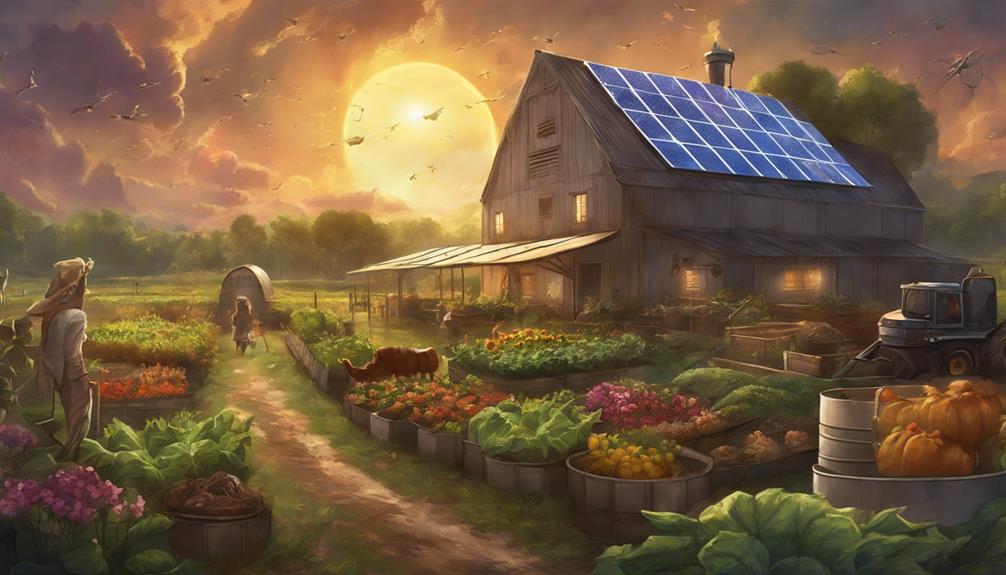
When it comes to sustainability in 7 Days to Die farming, focusing on soil quality importance, crop rotation benefits, and water conservation methods is key. Maintaining the health of your soil through proper care and rotation can enhance crop growth and overall yield. Implementing water-saving techniques will not only help your crops thrive but also guarantee long-term sustainability for your farming endeavors.
Soil Quality Importance
Ensuring prime soil quality is essential for sustainable farming in 7 Days to Die. Soil quality directly impacts crop growth, yield, and overall sustainability within the game. Different crops have specific soil quality requirements to thrive at their best. Fertile soil, rich in essential nutrients, plays a significant role in enhancing crop productivity and reducing the risk of crop failure. To maintain soil health for long-term sustainability, it is imperative to regularly replenish soil nutrients. Players can improve soil quality through various methods such as using fertilizers, compost, or implementing crop rotation.
- Soil quality affects crop growth, yield, and sustainability in the game.
- Different crops have specific soil quality requirements for best growth.
- Fertile soil enhances crop productivity and reduces the risk of crop failure.
Crop Rotation Benefits
To optimize soil fertility and promote sustainable farming in 7 Days to Die, incorporating crop rotation provides numerous benefits for enhancing crop health and yield. Crop rotation plays an essential role in maintaining soil fertility by preventing nutrient depletion through the alternating of plant types. This practice also helps reduce the risk of pests and diseases that target specific crops, ultimately promoting overall crop health. By rotating crops, farmers can improve both yield and quality as it allows the soil to recover and replenish essential nutrients. Additionally, different crops have varying nutrient needs, and crop rotation helps balance soil nutrients for best growth. Embracing sustainable farming practices like crop rotation supports long-term food production and ecosystem health.
Water Conservation Methods
Implementing water conservation methods is essential for sustainable farming practices in 7 Days to Die. To optimize water usage, consider the following techniques:
- Implement drip irrigation systems: Reduce water wastage by delivering water directly to the base of plants.
- Utilize rainwater harvesting: Collect and store rainwater for irrigation purposes, reducing reliance on other water sources.
- Practice mulching: Retain soil moisture by covering the soil around plants, decreasing water evaporation and the need for frequent watering.
Farming Improvements
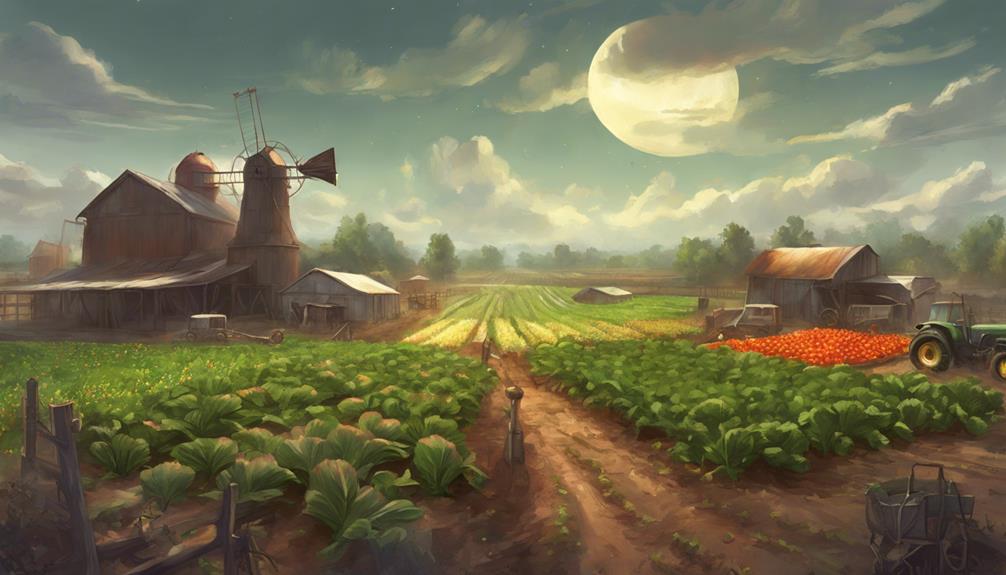
Consider enhancing the farming experience in 7 Days to Die by incorporating player feedback and implementing innovative mechanics. Currently, players express dissatisfaction with the farming system, seeking more engaging and rewarding gameplay. To address this, improvements in seed acquisition and planting methods could greatly enhance player engagement. By adjusting these mechanics, players can experience a more immersive farming aspect within the game.
One way to improve farming in 7 Days to Die is to introduce a wider variety of seeds. Providing players with more seed options can increase their interest and involvement in farming activities. Additionally, adjusting the planting methods to make them more intuitive and efficient can enhance the overall farming experience. These changes could address the current issues players have raised and make farming a more enjoyable aspect of the game.
Moreover, incorporating player suggestions and feedback into farming improvements is essential. By listening to the community's ideas and implementing changes accordingly, developers can make sure that the farming system meets players' expectations and enhances overall gameplay. Ultimately, by focusing on enhancing farming mechanics and player engagement, 7 Days to Die can create a more immersive and enjoyable experience for all players.
Frequently Asked Questions
How Does Farming Work 7 Days to Die?
Farming in 7 Days to Die works by planting crops like corn and potatoes, which need sunlight to grow. They go through different stages from seedling to mature plant. You can harvest them by melee attacking the mature plants. The Living Off The Land perk impacts crop yield and sustainability. When you harvest player-planted crops, there's a 50% seed drop chance, encouraging sustainable farming practices for long-term survival.
What Are the Best Crops to Eat in 7 Days to Die?
When surviving in 7 Days to Die, the best crops to eat are blueberries. They not only satisfy hunger but also quench your thirst, making them a vital food source. Easily cultivated in farm plots, blueberries are versatile and essential for maintaining your hunger and hydration levels. Including them in your farming strategy will provide a reliable and nutritious food source to keep you strong and healthy in the game.
How Long Do Crops Take to Grow 7 Days to Die?
Crops in 7 Days to Die take about 1 in-game day to grow from seedling to mature plant. Some crops may have varying growth times based on sunlight and environmental conditions. Tracking the growth stages visually is crucial, ensuring proper sunlight levels for best growth speed. Harvesting at the right time guarantees maximum yield and farming efficiency. Make sure to monitor your crops closely for successful cultivation in the game.
How to Farm Food 7 Days to Die?
To cultivate food in 7 Days to Die, you'll need to acquire the Living off the Land perk for better efficiency. Construct a farm plot with wood, rotting flesh, nitrate powder, and clay soil to begin growing crops. Obtain various seeds, prepare them on your toolbar, and sow them by right-clicking on the plot. Remember the plant growth stages: seeding, growing, and fully developed, before harvesting. Good lighting is crucial for healthy growth.
Conclusion
As you watch your crops slowly grow and flourish in 7 Days to Die, you can't help but feel a sense of accomplishment. But just when you think you have mastered farming in the game, a new challenge arises. Stay tuned for our next article, where we will explore advanced farming techniques to take your agricultural skills to the next level. Happy farming!





